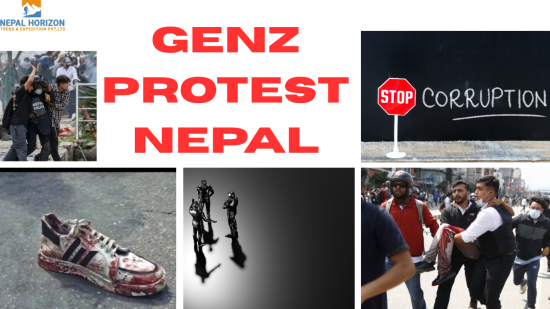Photography Guide for Annapurna Base Camp Trek: Best Spots & Tips
27th August 2025
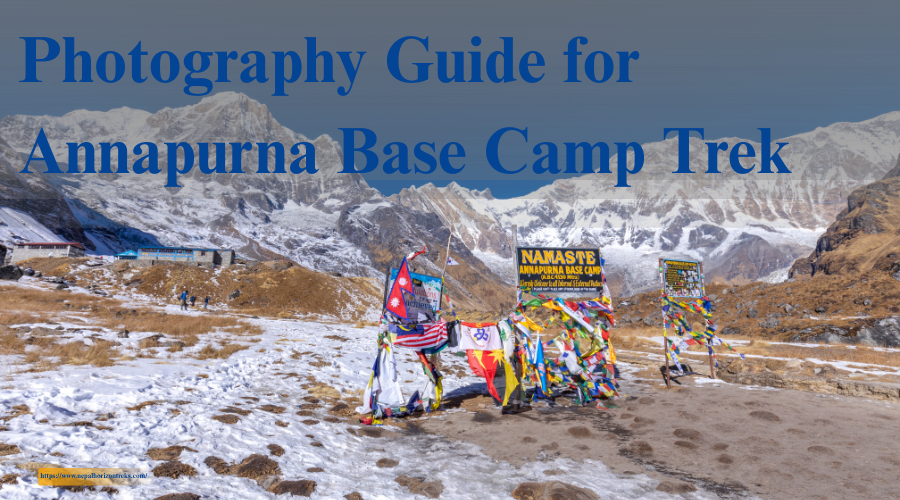
1. Introduction
Nepal Horizon Treks invites you to explore the timeless beauty of the Annapurna region—where towering peaks, pristine alpine forests, and remote villages converge to create one of the world’s most photogenic trekking experiences. The Annapurna Base Camp (ABC) trek isn’t just a journey through extraordinary landscapes; it's a canvas for photographers seeking that perfect shot—be it sunrise over Annapurna South, mist-clad forest trails, or the vibrant life of Gurung villages.
In this guide, we’ll walk through the best photography locations, offer practical tips to capture standout images, and provide an SEO-friendly structure if you choose to share your photos and write-ups. Whether you're a beginner or an experienced photographer, this blog ensures you’re geared up—mentally and physically—to make your Annapurna Base Camp trek truly unforgettable.
2. Why Photograph Annapurna Base Camp?
- Stunning Diversity of Scenery: From terraced rice fields and traditional villages to rhododendron forests and panoramic views of Annapurna, Machapuchare (Fishtail), Hiunchuli, and other Himalayan giants.
- Light That Changes by the Minute: Alpine light during golden hours transforms the mountains into gold, amber, fuchsia, and violet.
- Cultural Richness: Take human-centered shots: Gurung villagers, prayer flags fluttering, mani walls, chortens, and local life—immersive and evocative.
- Compact Trek with High Reward: In roughly 10–12 days, you gain altitude, changing ecosystem and light, making it highly efficient for photography.
3. Planning Your Photography-Focused Trek
Timing & Seasons
- Autumn (Mid-Sept to Mid-Nov) – The most popular season. Clear skies, stable weather, and vibrant trails. Prime for sharp, dramatic landscapes.
- Spring (Mid-Mar to Late-May) – Rhododendron blooms (late March to mid-April) blanket the forest in pink and crimson—fantastic for foreground interest.
- Winter (Dec to Feb) – Cold, often snowy, offering crisp blue skies. Fewer trekkers—but limited daylight and possible trail closures.
- Monsoon (June to early Sep) – Lush greenery, dramatic clouds, and waterfalls, but beware of heavy rainfall, landslides, and unstable skies—not ideal for landscapes.
For photography, autumn and spring are the best: good light, trail conditions, and views.
Permits and Porters/Guides
Permits: You need an ACAP permit and a TIMS card to trek in the Annapurna region. Porters and guides lighten your load—letting you focus on gear, compositions, and photography rather than hauling heavy equipment.
4. Essential Gear for the Annapurna Trek
Camera Types
- DSLR or Mirrorless: Full-frame or APS-C bodies excel in low light and dynamic range.
- Camera Choice: Compact or crop-sensor cameras are light and handy, though they may struggle in low light and offer less dynamic range.
Lenses & Accessories
- Wide-angle (14–35mm): For sweeping mountain vistas and foreground interest.
- Standard mid-range (35–70mm or 24–70mm): Ideal for landscapes with context or cultural portraits.
- Telephoto (100–300mm): For TBH shots—towering peaks, distant yak herds, prayer flags high on ridges.
- Tripod: Compact, lightweight but sturdy—indispensable for dawn/dusk, panoramas, time-lapsing.
- Filters:
- Polarizer: Enhances skies, water reflections, and reduces glare.
- ND Graduated: Balances bright skies with darker terrain at sunrise/sunset.
- Lens Cloth & Dust Blower: Crucial on dusty, windy trail days.
Power, Storage & Protection
- Batteries: Keep spares warm (inner jacket pocket) to combat cold drain.
- Memory Cards: Multiple 32–128 GB cards—carry backups and rotate mid-trek.
- Backup Drive (optional): A rugged SSD if you plan to offload on-the-go.
- Camera Rain Cover or Dry Bag: Just in case of rain, snow, or river crossings.
5. Best Photographic Spots Along the Trek
Below are key locations with photography highlights:
1. Kathmandu to Pokhara
- Kathmandu’s Durbar Squares, Swayambhunath, Boudhanath: Capture urban Nepalese life, temple atmospheres, prayer flags, and street portraits.
- Pokhara Lakeside at Sunset: Dap or Sarangkot overlook: sunrise and sunset over Phewa Lake and Annapurna Dhaulagiri range reflections.
2. Pokhara to Ghandruk
- Rice Terraces: Along the valleys toward Ghandruk; early morning mist drifts and layers make for magical, painterly scenes.
- Gurung Villages (e.g., Ghandruk): Traditional stone houses, women weaving, prayer mani-walls—perfect for authentic portraits and cultural storytelling.
3. Ghandruk → Chhomrong → Hinku Cave → Dovan
- Rhododendron Forests: In spring, pink blooms surround the trail; in autumn, fallen leaves and forest shafts of light.
- Waterfalls & Streams: Try slow-shutter to soften water at places like Chhomrong and Bamboo.
4. Machapuchare Base Camp (MBC) to Annapurna Base Camp (ABC)
- MBC Campsite View: First real sight of Annapurna South and Machapuchare (Fishtail).
- ABC Panorama: A sweeping amphitheater of massive peaks—fairytale light just before dawn. Compose with prayer flags or wild Himalayan flora in the foreground.
5. Sunrise & Sunset at ABC
- Sunrise (e.g., around 5:30 AM, depending on season): The mountains erupt in rosy glow (“alpenglow”)—pure magic.
- Sunset: If you stay late on ABC, the western side glows against deepening valleys—a different, intimate kind of glow.
6. Technical Tips for Capturing Annapurna’s Magic
Composition & Framing
- Foreground Interest: Dutiful stone walls, prayer flags, rhododendron flowers, trekkers in brightly colored jackets.
- Leading Lines: Use natural elements like hiking paths, ridges, or rivers to lead the viewer’s gaze through your photograph.
- Rule of Thirds: Place the horizon, mountain peaks, or villagers along intersecting thirds for balanced compositions.
Light Management
- Golden Hour (30–60 min after sunrise / before sunset): Soft, warm light—ideal for landscapes.
- Blue Hour: The pre-sunrise/after-sunset sky glows blue; perfect for star trails or silvery-lit peaks.
- Use ND Graduated Filters: To tame bright skies while preserving foreground detail.
- Polarizers: Low-angling morning sun can deepen blues and enhance contrast—but be cautious of uneven polarization in wide scenes.
Exposure, White Balance & Focus
- Exposure: Meter for mid-tones or skintones; use histogram to avoid clipping shadows or highlights.
- Bracketing/Exposure Blending: For high-contrast scenes (bright snow and dark forests), bracket 2–3 exposures.
- White Balance: Experiment—“Cloudy” warms up cold scenes. Or shoot RAW and adjust later.
- Focus: Use autofocus point on midground for landscapes; for close-ups or flora, manual focus works well.
Capturing Scale & Human Presence
- Include a person (even silhouetted) at ABC or on ridges to show the immensity of the landscape.
- Wide-angle shots with trekkers mid-frame reinforce scale.
Panoramas, Time-Lapses & Starscapes
- Panoramas: Stitch high-resolution mountain scenes by panning horizontally—handheld or tripod-mounted.
- Time-Lapses: Use your interval timer on sunrise or cloud movement near ABC.
- Astrophotography: Capture starry skies with ISO 1600–3200, aperture f/2.8–4, and exposure times of 15–25 seconds.
7. Practical Advice on the Trail
Weather, Altitude & Lighting
- Altitude Awareness: Cold at higher camps—dress warmly and keep batteries close to body heat.
- Snow & Fog: Protect your lens with a hood and regularly wipe off condensation or moisture.
- Cloud Management: Clouds may obscure peaks—turn this into opportunity: misty forest mood shots, macro of raindrops, close-ups of prayer flags.
Carrying and Protecting Gear
- Camera Bag Under Main Backpack Raincover: Easier to access, better protected.
- Use Padded Cube Inside Pack: Separates gear from trekking essentials.
- Avoid Changing Lenses in Dusty Conditions: Prevent sensor damage; prefer a single reliable lens on dusty, windy days.
Respect and Ethics in Photography
- Ask Permission: Before photographing locals—use a smile, a nod, or simply ask; many will obligingly pose.
- Respect Sacred Sites: Monasteries, mani walls, shrines—avoid flash or getting too close.
- Leave No Trace: Remove any trash, even if not yours. Photographers have responsibility to keep alpine zones pristine.
8. Post-Trek Workflow
Managing and Backing Up Photos
- Immediate Backup: At Pokhara or Kathmandu, off-load to laptop/external drive or cloud.
- Organize: Use folders by day and location— “Day 3 – Ghandruk”, “Day 8 – ABC dawn”.
- Rate/Select: Cull obvious rejects (blurry, overexposed) quickly to reduce clutter.
Basic Editing for Alpine Landscapes
- Editing RAW Files: Adjust shadows, fine-tune white balance, enhance contrast, and carefully manage highlights to bring out details in your images.
- Clarity & Dehaze: Use sparingly to bring back distant mountain detail.
- Selective Adjustments: Brighten a foreground flower or villager’s face without flattening the snowy peaks.
- Sharpening & Noise: Small doses on high-ISO night or twilight shots.
- Export: Web-optimized JPEGs (around 1 MB for blog); keep full-res TIFFs for printing or large use.
9. Conclusion
The Annapurna Base Camp trek is a photographer’s dream. From village culture and rhododendron forests to grand mountain panoramas and ethereal sunrise, every stage offers image-worthy magic. With thoughtful planning, essential gear, and an eye for light and composition—as outlined above—you’re set to capture visuals that do justice to Nepal’s high Himalayan grandeur.
Nepal Horizon Treks is here to guide you—not just on the trail, but to help frame your story through your lens. Whether you're blogging, sharing on Instagram, or framing prints, the images and insights you gather on ABC will resonate long after the snow melts.
Happy trekking, and may your shots glow with alpine light!
Contact Nepal Horizon Treks
Planning your Annapurna Base Camp adventure? Contact us for expert guidance, photography tips, and personalized trekking packages.
Office Address:
Thamel, Chhetrapati, Kathmandu, Nepal
Phone:
+977-9851183849 (Mobile / WhatsApp)
+977-01-4268273 (Landline)
Email:
info@nepalhorizontreks.com
Website:
www.nepalhorizontreks.com
Social Media:
- Facebook: Nepal Horizon Treks
- Instagram: @nepalhorizontreks
- YouTube: Nepal Horizon Treks
Recent From Blogs

7th October 2025

27th September 2025
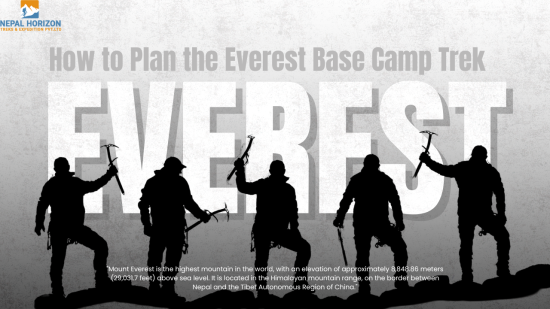
25th September 2025

22nd September 2025
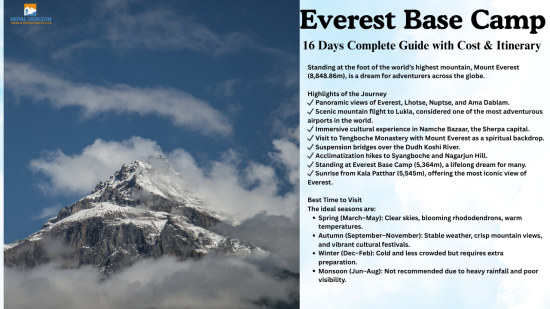
20th September 2025

17th September 2025
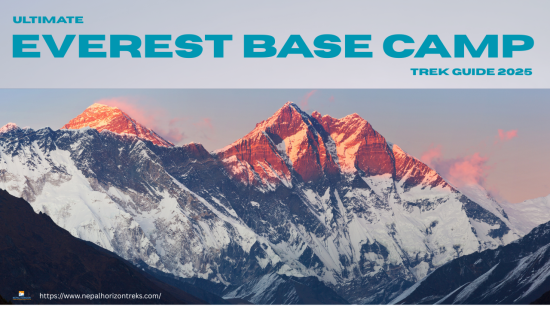
15th September 2025
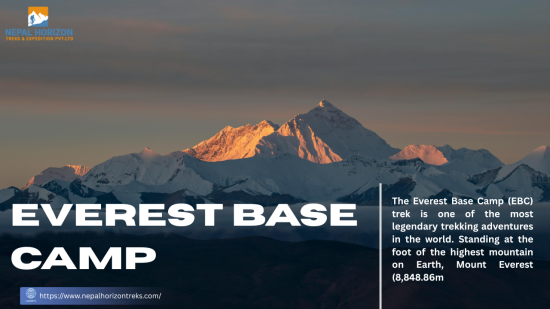
13th September 2025
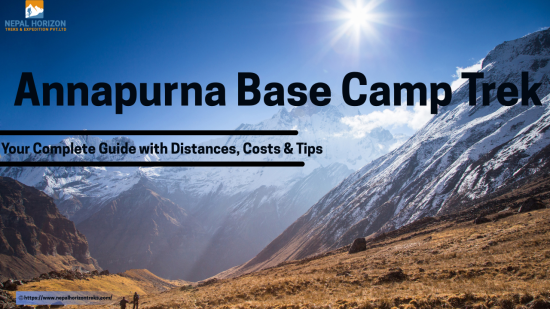
11th September 2025
